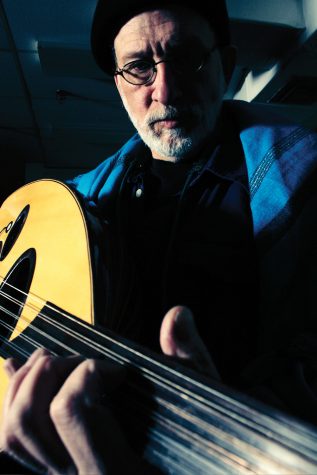D’var Torah: Our shalom is broken; we look for connection
Published July 21, 2022

We are dreaming peace all the time now, the evidence of that broken letter vavin the word shalom of briti shalom, covenant of peace, in Numbers 25:12, that may be what’s holding it up. The vav in shalom is broken.
Let’s fix the vav in the brit shalom. Who will do it if not us.
The covenant of peace, this reward that is given to our loyalist Pinchas, who was rewarded with the priesthood for an unseemly act in Numbers 25:7. Pinchas ran them through, that man and his girlfriend, for not behaving well.
ADVERTISEMENT
We might think his reward was the priesthood, but what is it — this covenant of peace — the near peace and the far peace as Isaiah calls it (Isaiah 57:19). With the far peace, we have confidence in the future. The near peace is more elusive.
The near peace is the inward peace; the far peace they’re negotiating a world away — or not negotiating. Here we are praying, working our gardens and our abs.
I had to ask Pinchas, son of Eleazar son of Aaron, what kind of peacemaker might you be priest? Man, you ran them through, that man and his girlfriend, killed them both. You love an argument, your reward is the priesthood, but I spy with my little eye a diminished yud in your name (Numbers 25:11).
A clue. There is something unfinished in you Pinchas. We need you, but we need you whole.
The vav in shalom seems so broken right now. “K’TIA!” I holler. K’tia means broken.
I remember the perfect vav, the straight up-and-down letter, before its brokenness, the sign of connection.
Sometimes, I feel hollow and broken, too. K’tia! on me, I say. When I feel this way, I pray: Restore me because I am not broken. I know how to use my language to integrate; I call that the power of blessing.
ADVERTISEMENT
I have learned how to use my words to make peace out of the pieces, lift up the lower union to join the upper union, the language of unification, that’s vav in its complete form,
the connector, straight up-and-down and humble.
In form, the vav is the up-and-down letter, straight standing. In content, vavmeans “and.”
The vav connects in form, connecting heaven and earth, so to speak. I call this the vertical link.
The vav also connects in content. I call this the horizontal link, the holy “and,”vav meaning “and,” the most conjunctive humble word.
Pinchas: Fix that vav, restore the brokenness between us and within us. Do it with the “and” relational and horizontal, the “and” that connects us, plus the vertical “and,” that’s the spiritual connector of upper worlds and lower worlds, heaven to earth, as if we could say.
We do say. This will be our priestliness in its loftiest form.
Oh priestliness, fix it all; if you can’t, we will. We’re working on it, me and all my pals, we are whole and ready. Deputize us.
I’m trying to end this prayer, but I can’t. I’m waiting for new language, an active waiting, something horizontal, something vertical, too, relational and connective, the repair of the near and the repair of the far.
We are actively waiting for something new to rise out of the old, something revelational, something like … and.
Rabbi James Stone Goodman serves Central Reform Congregation and is a past president of the St. Louis Rabbinical and Cantorial Association, which coordinates the d’var Torah for the Jewish Light.















